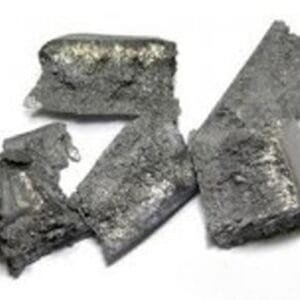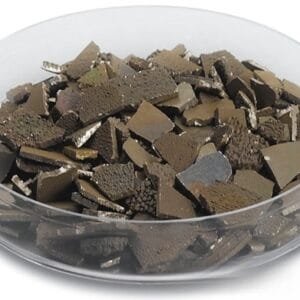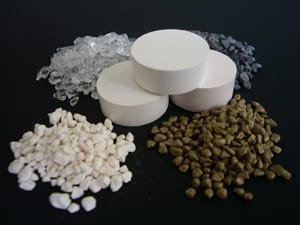| Material Type | CIGS(CuInxGa1-xSe2) |
| Symbol | CIGS(CuInxGa1-xSe2) |
| Melting Point (°C) | |
| Theoretical Density (g/cc) |
| Z Ratio | |
| E-Beam | |
| E-Beam Crucible Liner Material | |
| Temp. (°C) for Given Vap. Press. (Torr) | |
| Comments |
CIGS(CuInxGa1-xSe2) Pellet Evaporation Material
TFM offers high-purity CIGS(CuInxGa1-xSe2) Pellet Evaporation Material, a crucial compound for thin-film solar cells, semiconductor applications, and optoelectronic devices. Known for its high efficiency and excellent photovoltaic properties, CIGS is widely used in solar energy conversion and advanced thin-film deposition technologies.
Key Features and Advantages
High Purity (99.99% – 99.999%) – Ensures optimal performance in thin-film deposition.
Superior Light Absorption – Provides high conversion efficiency for solar energy applications.
Optimized for Thin-Film Deposition – Ideal for thermal and E-beam evaporation techniques.
Customizable Composition – The Cu/In/Ga ratio can be modified to adjust bandgap energy for specific applications.
Stable & Uniform Film Formation – Ensures consistent coating quality, essential for photovoltaic devices.
Applications
Thin-Film Solar Cells – A key material in flexible and high-efficiency solar panels.
Optoelectronic Devices – Applied in photodetectors, LEDs, and other semiconductor technologies.
Photovoltaic Research & Development – Supports next-generation solar cell innovation.
Thin-Film Transistors & Sensors – Used in wearable and transparent electronics.
Industry Impact
TFM’s CIGS(CuInxGa1-xSe2) Pellet Evaporation Material is a high-performance material for solar energy and semiconductor advancements. With its exceptional purity, superior absorption properties, and optimized thin-film deposition characteristics, it ensures high energy conversion efficiency, making it a preferred choice in renewable energy and advanced electronics.


 MSDS File
MSDS File



Reviews
There are no reviews yet.